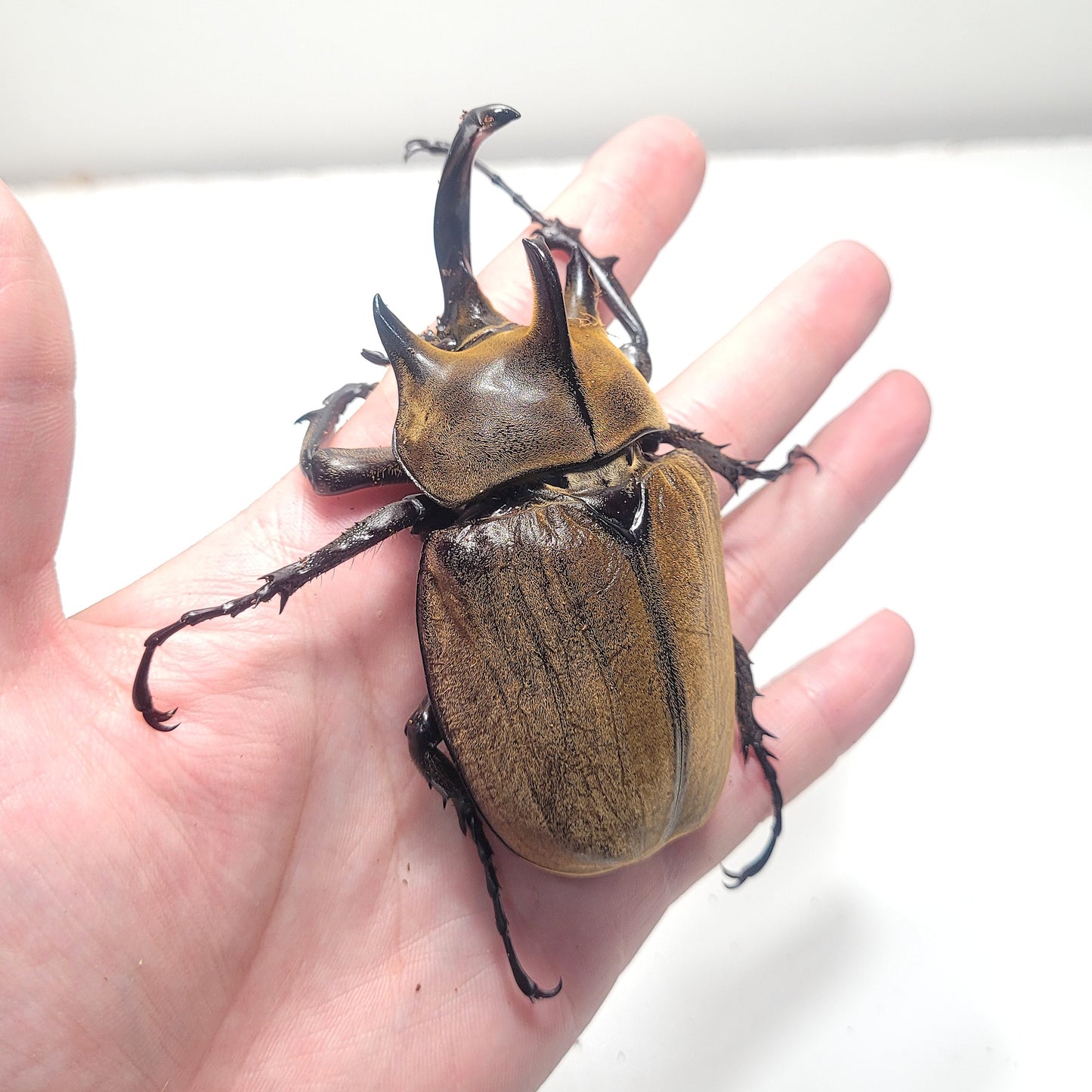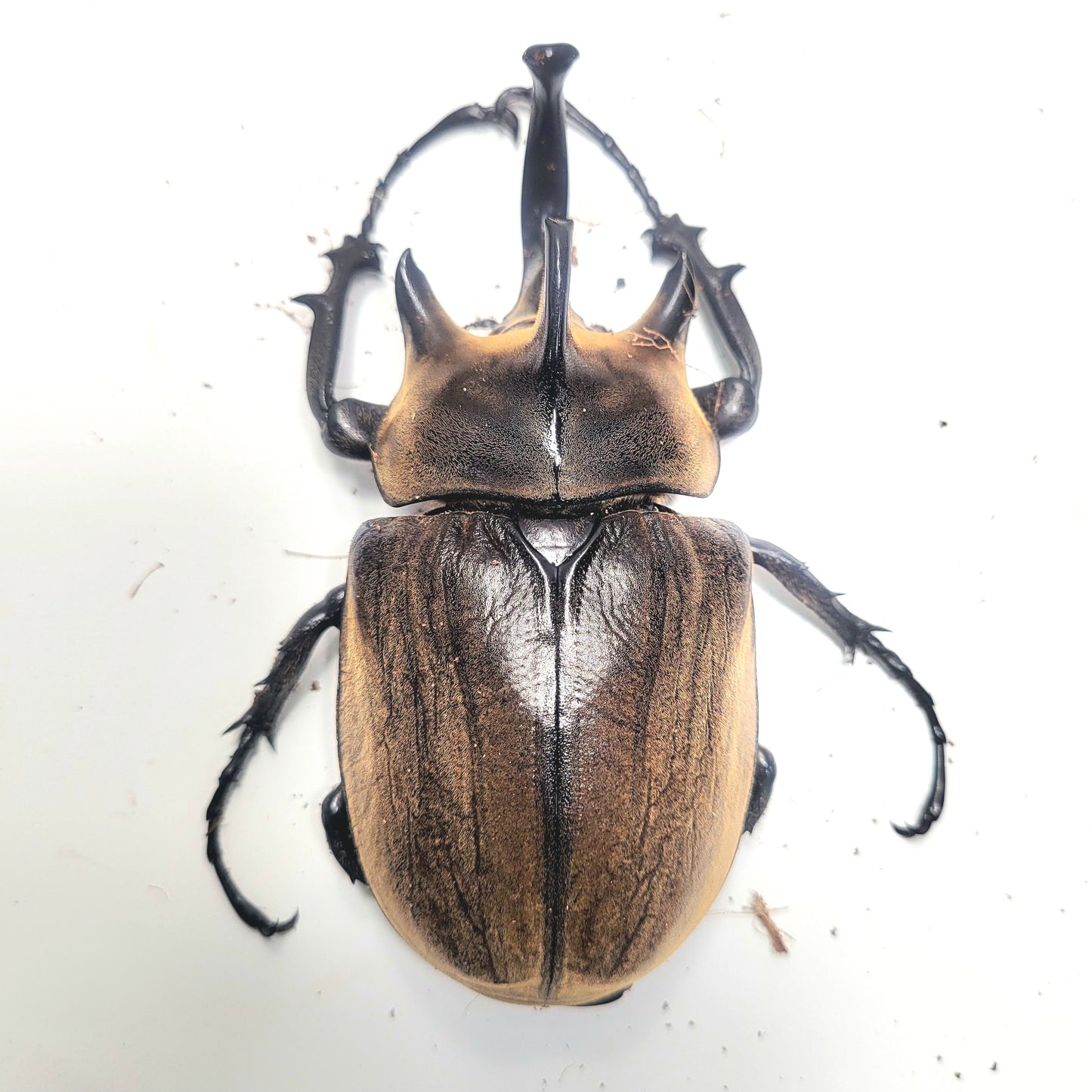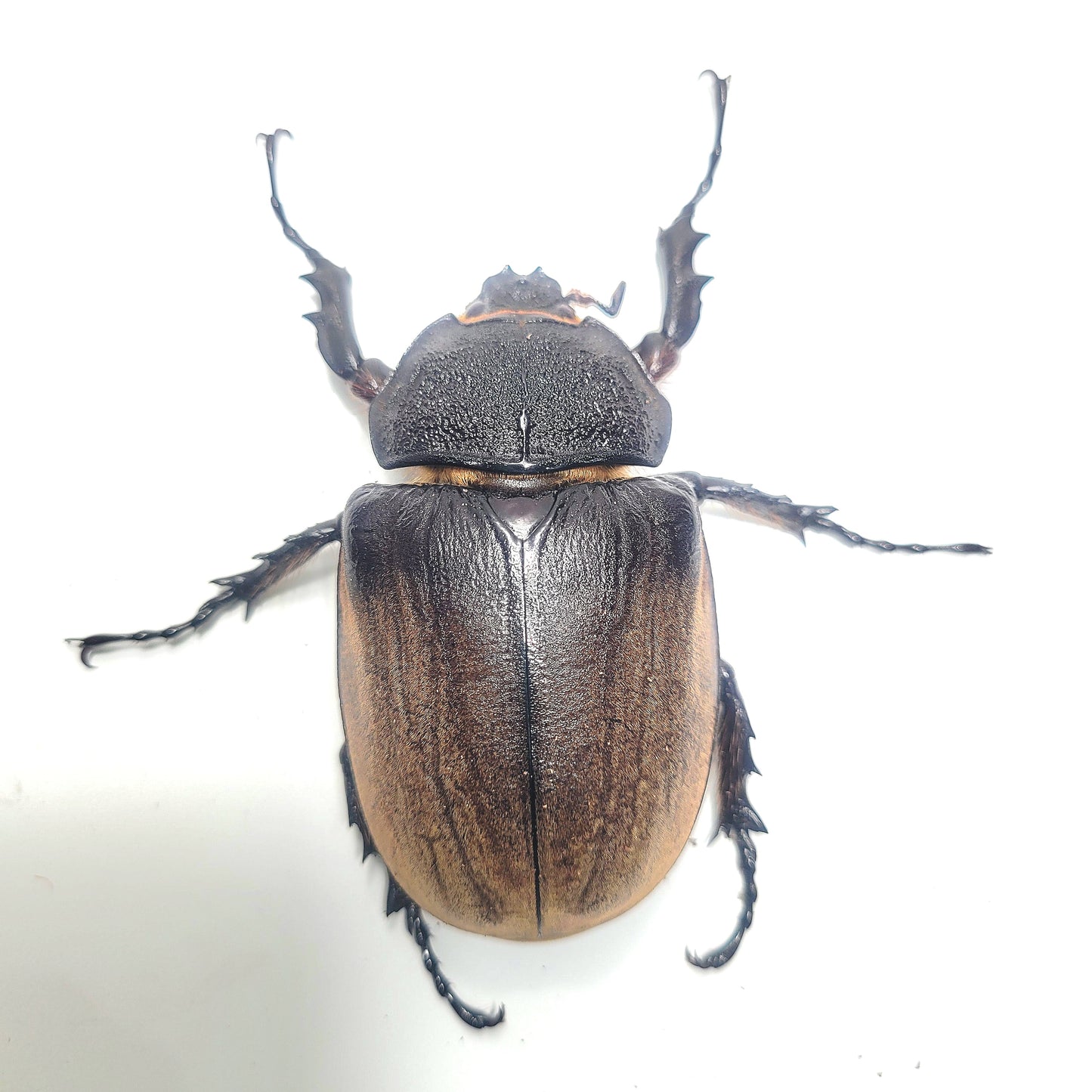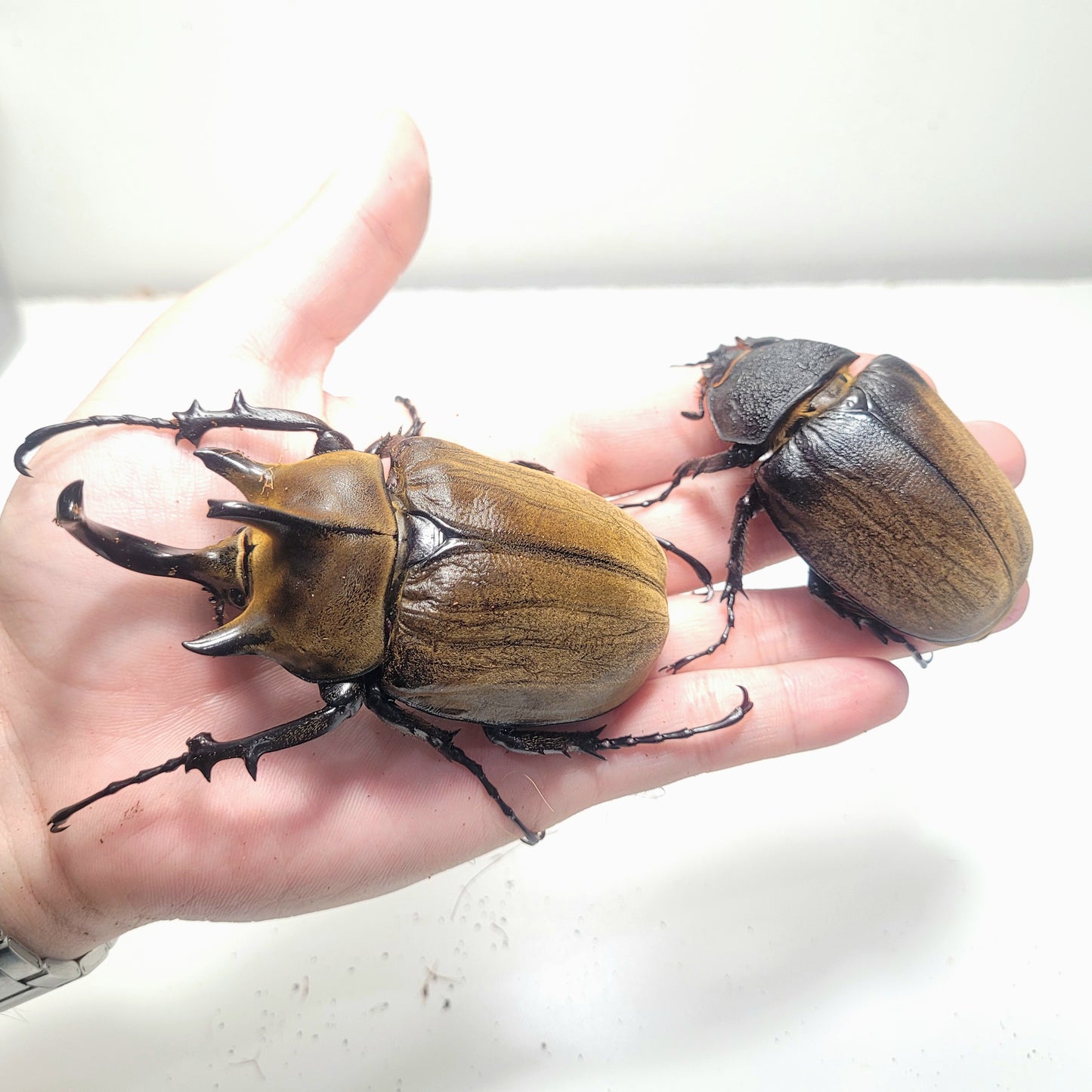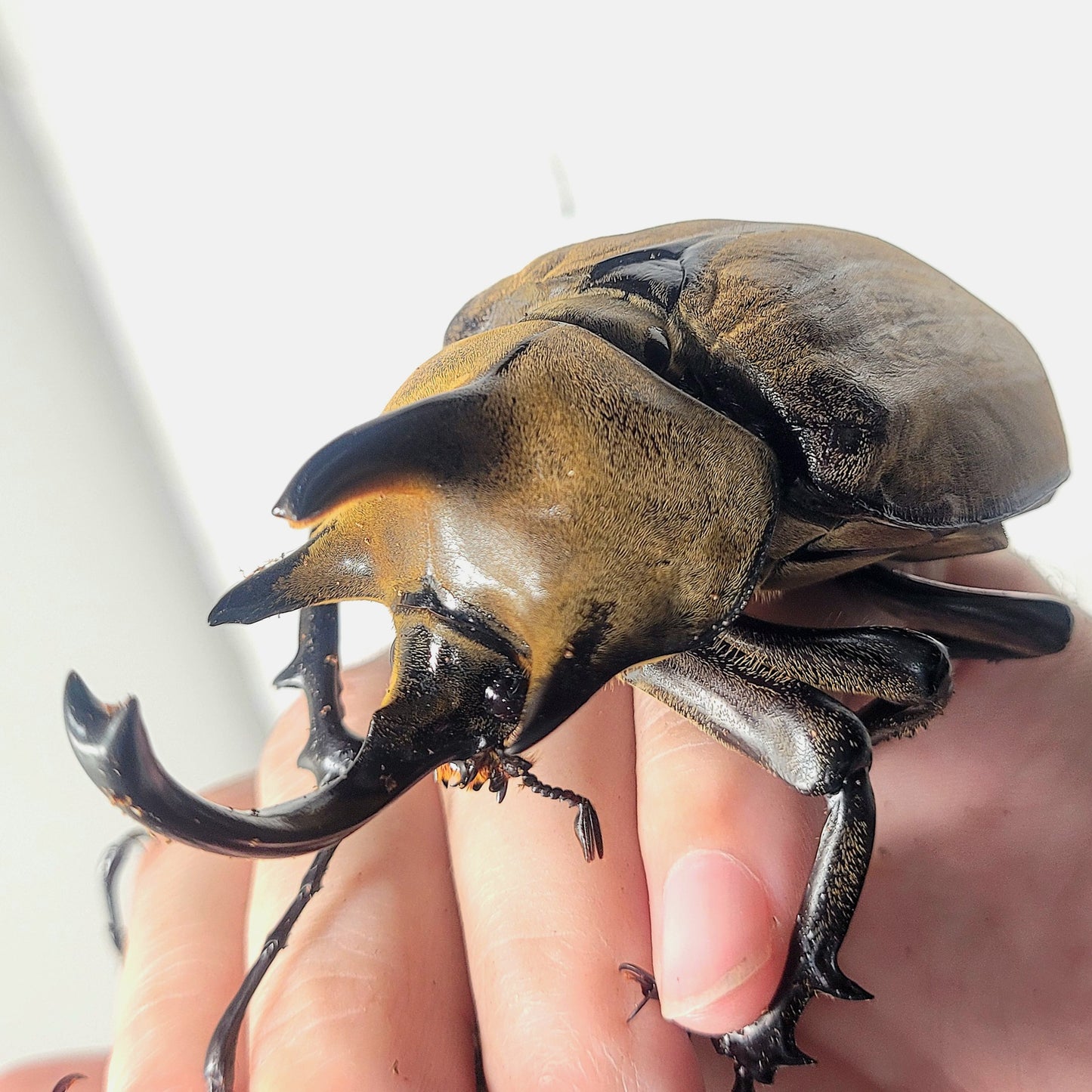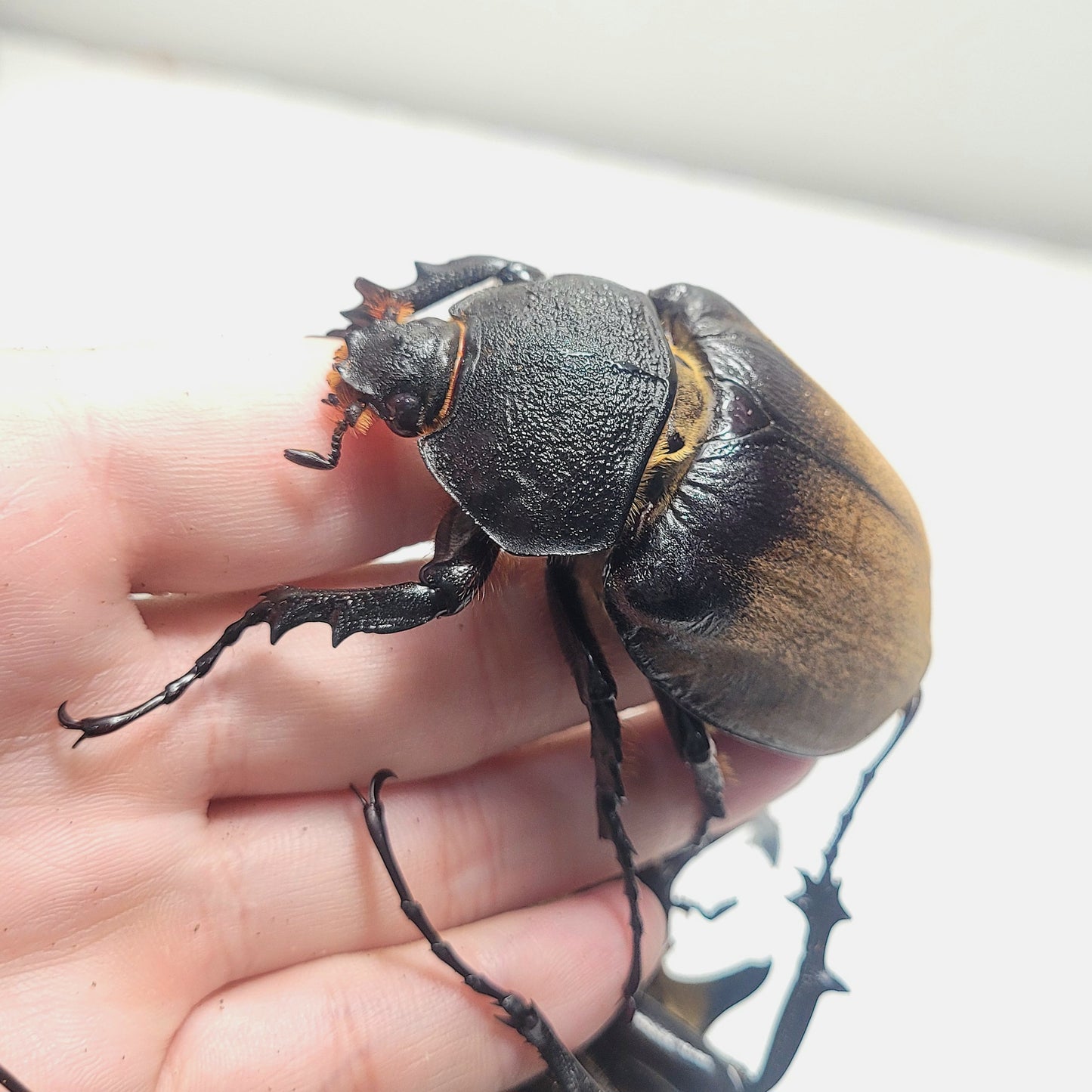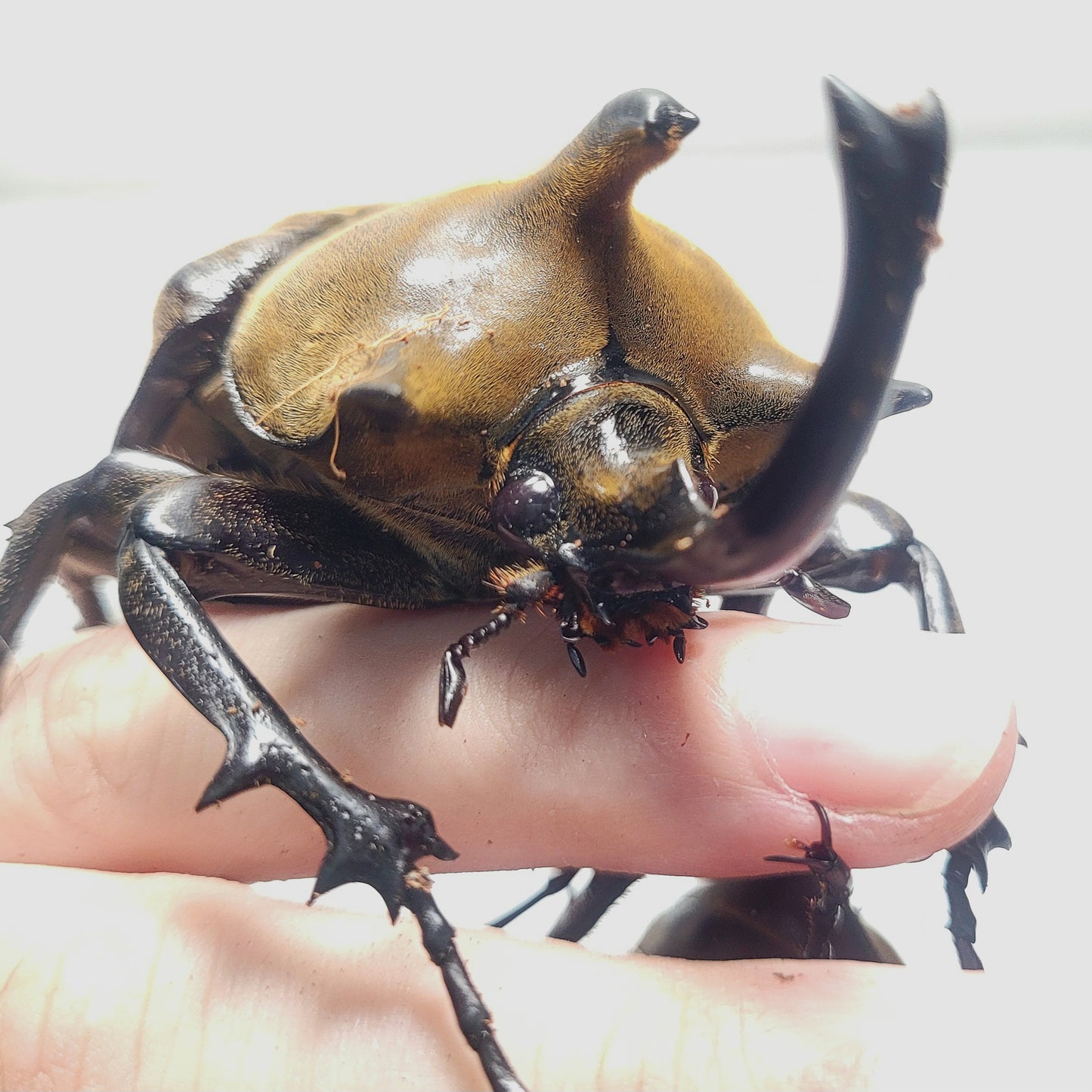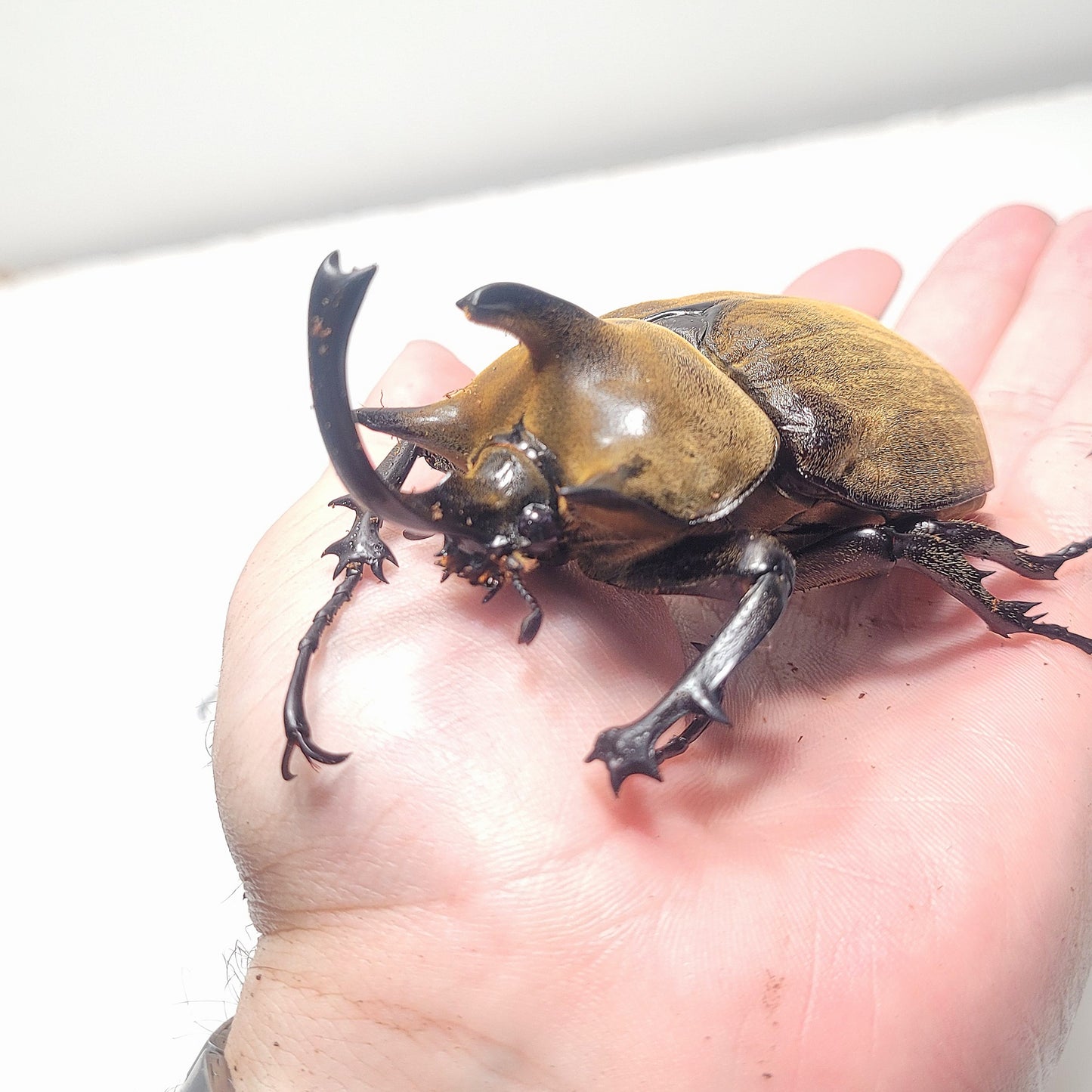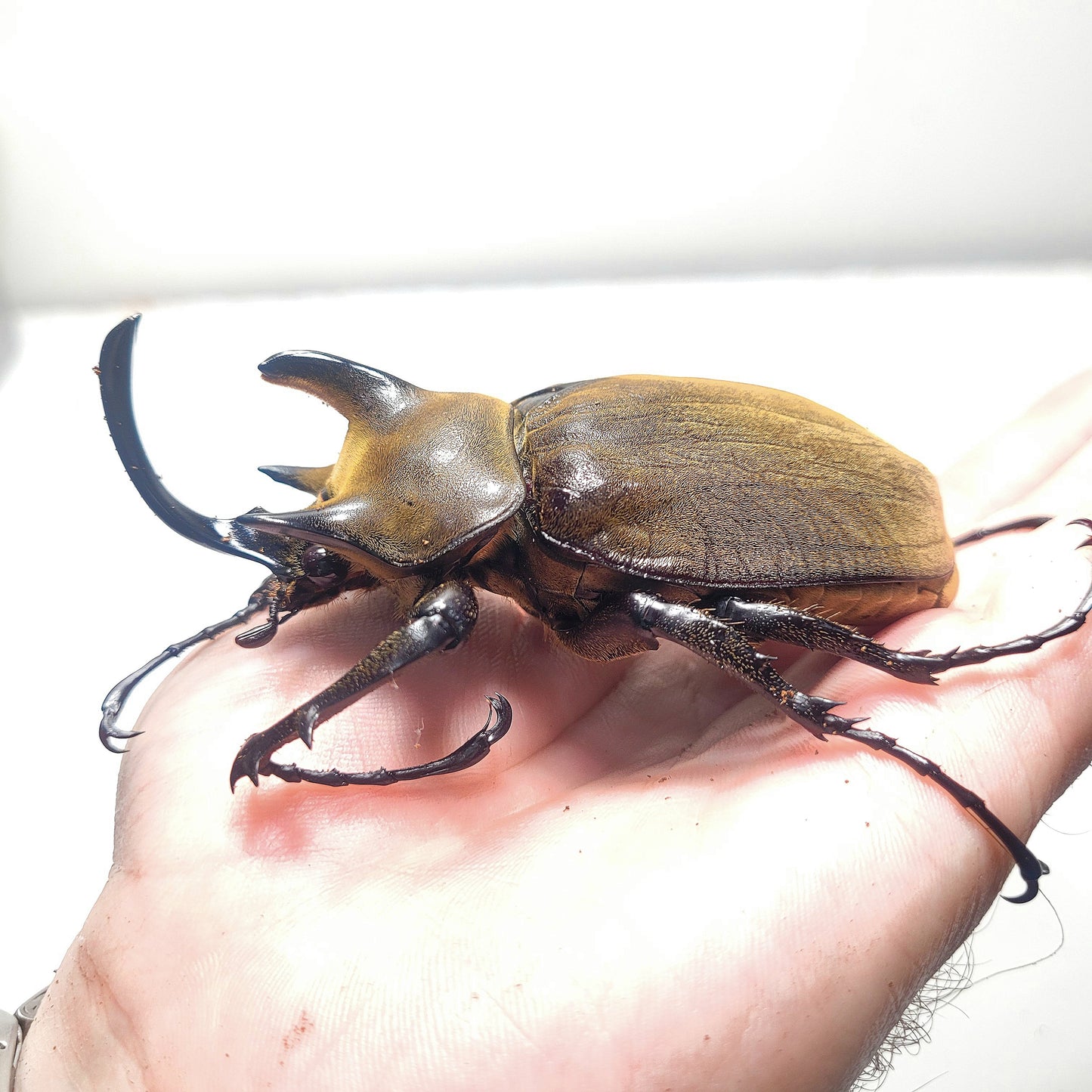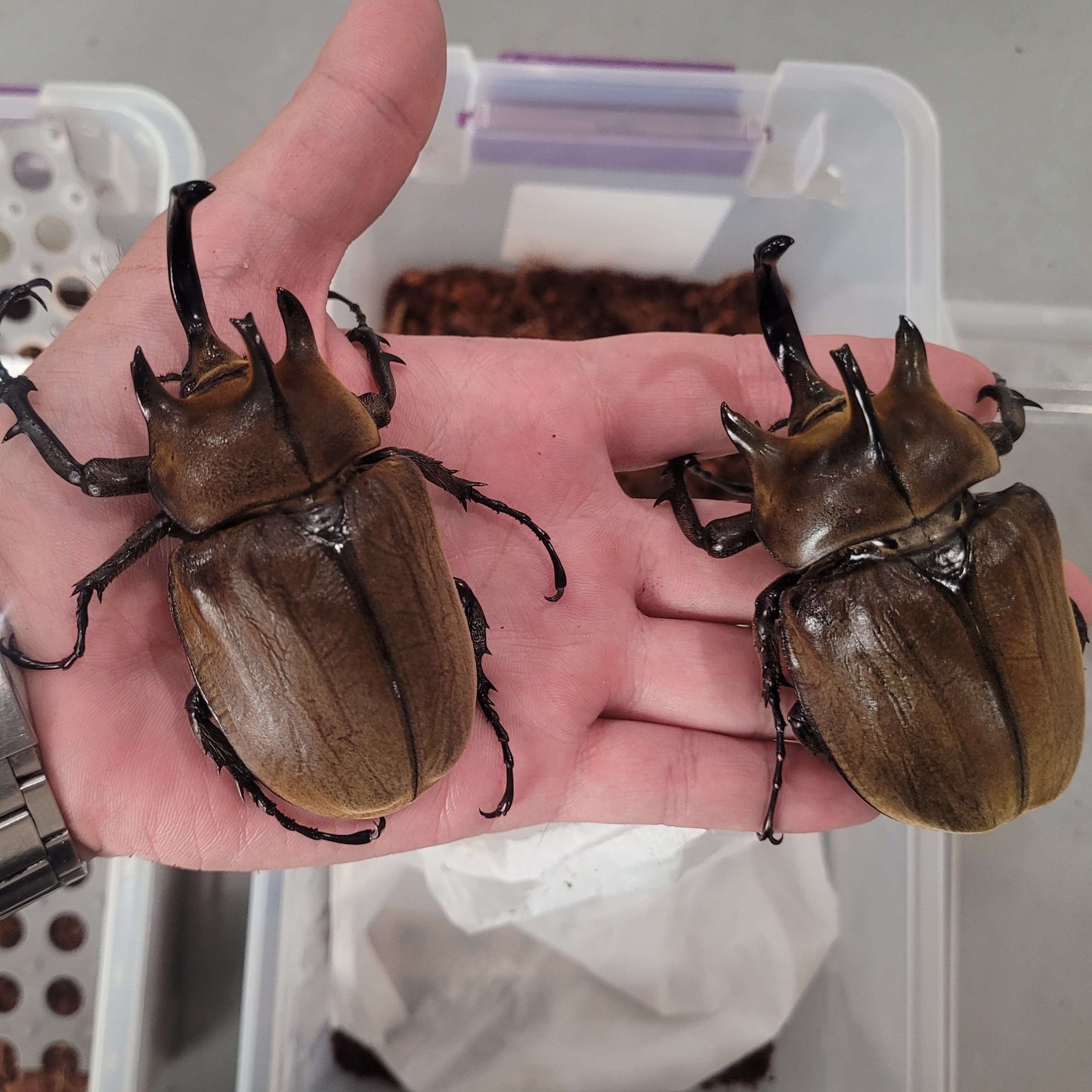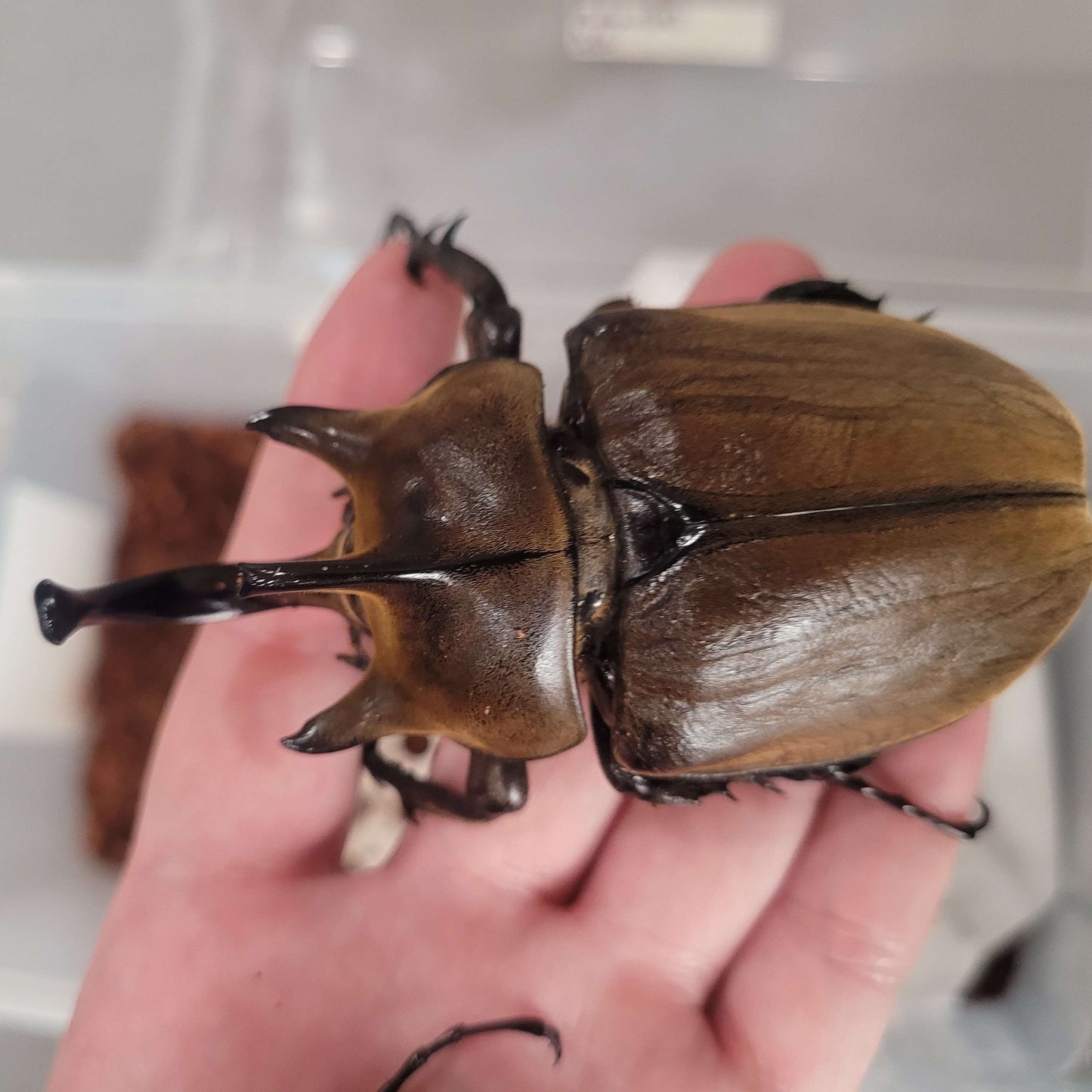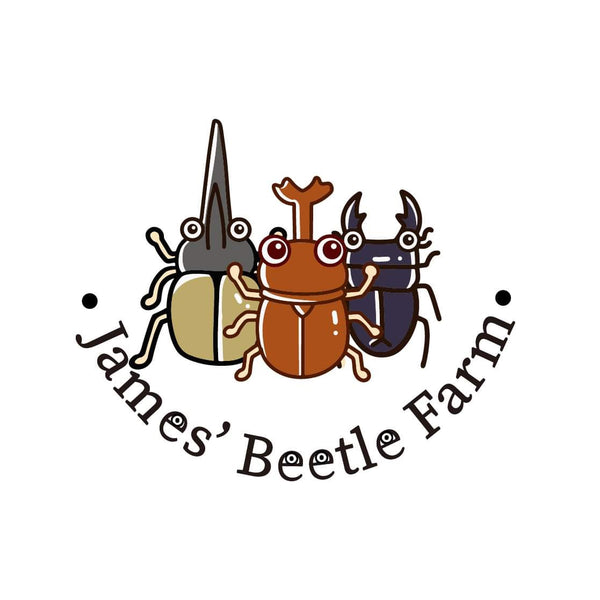James' Beetle Farm
The Gyas Elephant Beetle (megasoma gyas prandii)
The Gyas Elephant Beetle (megasoma gyas prandii)
Couldn't load pickup availability
Species Summary:
Adult lifespan: 2-5 months
Pupa period: 1-2 months.
Larva period: 2-3 years
Breeding difficulty: 2/10
Larva communal: Yes
Species Info:
Megasoma gyas prandii is a subspecies of the rhinoceros beetle belonging to the family Scarabaeidae, specifically within the subfamily Dynastinae. This impressive insect is a member of the genus Megasoma, a group of large beetles known for their massive size and distinctive horn-like structures in males. Males can reach lengths of up to 120 millimeters (about 4.7 inches) M. g. prandii is one of several recognized subspecies of Megasoma gyas, and it stands out due to specific morphological traits and its localized geographic distribution.
Native to South America, Megasoma gyas prandii is primarily found in parts of Brazil, particularly within the Atlantic Forest region. This biome is known for its high biodiversity and endemism, but it is also highly threatened due to deforestation and habitat fragmentation. The beetle's presence in this region highlights its ecological role in decomposing organic matter and contributing to nutrient cycling in the forest ecosystem.
Morphologically, M. g. prandii is notable for its large size, robust body, and the prominent horns that adorn the males, which are used for combat and mating displays. The coloration is typically dark brown to black, with a velvety texture on the exoskeleton due to fine hair-like structures. These beetles are mostly nocturnal and are attracted to lights at night, a trait that facilitates their collection for scientific and hobbyist purposes.
Despite their intimidating appearance, these beetles are harmless to humans. Their life cycle includes a lengthy larval stage, during which the larvae feed on decaying wood and organic material. This makes them important contributors to forest health. However, due to their limited range and habitat specificity, M. g. prandii may be vulnerable to environmental changes and human activity.
In conclusion, Megasoma gyas prandii is a fascinating example of the diversity within the Dynastinae subfamily. Its impressive size, ecological role, and restricted habitat make it a subject of interest not only for entomologists but also for conservationists seeking to preserve the rich biodiversity of South America's Atlantic Forest.
Share
